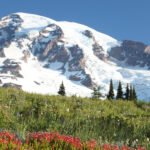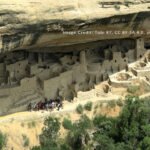Discover the stunning beauty of Rocky Mountain National Park in Colorado. Explore top attractions, activities, biodiversity, accommodations, and conservation efforts in our comprehensive guide.
Table of Contents
Introduction to the Park
Nestled in the heart of Colorado, Rocky Mountain National Park (RMNP) spans over 415 square miles of stunning landscapes. This natural haven offers breathtaking vistas, towering peaks, and serene alpine lakes, making it a must-visit destination for nature lovers and adventure seekers alike. From lush forests to rugged mountains, RMNP’s diverse ecosystems provide a unique backdrop for exploring the great outdoors. Whether you’re planning a family vacation or a solo adventure, the park’s unparalleled beauty and myriad of activities promise an unforgettable experience.
History and Background
Rocky Mountain National Park was established on January 26, 1915, and has since become a treasured landmark. The park preserves the natural beauty of the Rocky Mountains while also protecting its rich cultural history. Native American tribes, such as the Ute and Arapaho, originally inhabited the region, utilizing its resources for sustenance and spiritual practices. European explorers and settlers arrived in the 19th century, drawn by the promise of gold and the allure of the wild landscape. Today, RMNP stands as a testament to conservation efforts and the importance of preserving natural heritage.
Biodiversity in Rocky Mountain National Park
Rocky Mountain National Park is a biodiversity hotspot, home to a wide range of flora and fauna. The park’s elevation ranges from 7,860 to 14,259 feet, creating diverse habitats that support over 1,000 species of plants and numerous animal species. Visitors can spot elk, mule deer, bighorn sheep, and even black bears roaming the park. Birdwatchers will delight in the variety of avian species, including the majestic golden eagle. The park’s plant life is equally diverse, featuring alpine tundra, subalpine forests, and montane ecosystems, each with its unique assemblage of species.
Famous Attractions
One of the park’s most famous attractions is the Trail Ridge Road, the highest continuous paved road in the United States, reaching elevations of over 12,000 feet. The road offers spectacular views and numerous pullouts for photography. Bear Lake, another popular spot, provides a serene setting for hiking and photography. Longs Peak, the park’s highest summit, is a challenging climb for experienced hikers. The picturesque Glacier Gorge and the historic Holzwarth Historic Site, which showcases early 20th-century homesteading, are also not to be missed.
Activities in Rocky Mountain National Park
Rocky Mountain National Park offers an array of activities for visitors of all ages and interests. Hiking is a favorite pastime, with over 355 miles of trails ranging from easy walks to strenuous backcountry routes. Wildlife viewing and birdwatching are also popular, especially in areas like Moraine Park and Horseshoe Park. During winter, the park transforms into a snowy wonderland, ideal for snowshoeing, cross-country skiing, and ice climbing. Fishing, camping, and scenic drives provide additional ways to explore and enjoy the park’s natural beauty.
Accommodations in and around the Park
Visitors to Rocky Mountain National Park have several accommodation options, from rustic campgrounds to comfortable lodges. Inside the park, camping is available at sites like Moraine Park Campground and Aspenglen Campground. For those seeking more amenities, the nearby town of Estes Park offers a range of lodging options, including hotels, cabins, and bed-and-breakfasts. Estes Park also provides easy access to the park’s east entrance, making it a convenient base for exploring RMNP.
Weather Conditions
The weather in Rocky Mountain National Park can be quite variable, so it’s important to come prepared. Summer temperatures range from the 40s to the 80s (°F), with cooler temperatures at higher elevations. Afternoon thunderstorms are common, so plan hikes for the morning. Fall brings cooler temperatures and vibrant foliage, while winter can be very cold with heavy snowfall, particularly at higher elevations. Spring sees a mix of snow and mild temperatures, making it a quieter time to visit. Always check the weather forecast before heading out and be prepared for sudden changes.
Visitor Information
Before visiting Rocky Mountain National Park, it’s essential to plan ahead. The park is open year-round, but some areas may be inaccessible due to weather conditions, particularly in winter. Entrance fees are required, with options for daily or annual passes. The RMNP website provides up-to-date information on road conditions, trail status, and any alerts or closures. Visitor centers, like the Beaver Meadows Visitor Center and Kawuneeche Visitor Center, offer maps, educational exhibits, and helpful staff to assist with trip planning.
Conservation Efforts
Conservation is at the heart of Rocky Mountain National Park’s mission. The park is dedicated to preserving its natural and cultural resources through various initiatives. Efforts include habitat restoration, wildlife management, and programs to reduce human impact. The park works closely with organizations like the Rocky Mountain Conservancy to support conservation projects and educational programs. Visitors are encouraged to practice Leave No Trace principles to help protect the park’s pristine environment for future generations.
Tips for Visiting Rocky Mountain National Park
- Start early to avoid crowds and afternoon thunderstorms.
- Dress in layers and be prepared for changing weather conditions.
- Stay hydrated and bring plenty of water, especially at higher elevations.
- Use sunscreen and wear a hat to protect against the strong mountain sun.
- Respect wildlife by observing from a distance and not feeding animals.
- Check the park’s website for current conditions and trail updates.
- Pack out all trash and leave no trace of your visit.
For more information and resources about Rocky Mountain National Park, visit the official National Park Service website Click Here.
Rocky Mountain National Park is a treasure trove of natural beauty and outdoor adventure. From its diverse wildlife and plant life to its stunning landscapes and rich history, the park offers something for everyone. Whether you’re hiking to a high alpine lake, photographing breathtaking vistas, or simply enjoying the serenity of the mountains, RMNP provides an unparalleled experience. With careful planning and a respect for nature, your visit to Rocky Mountain National Park will be both memorable and inspiring. Explore, enjoy, and help preserve this magnificent wilderness for future generations.
You may also like EXPLORE COLORADO NATIONAL MONUMENT: HISTORY, ATTRACTIONS, AND ADVENTURE








2 thoughts on “Explore Rocky Mountain National Park: Complete Guide to Attractions, Activities, and Conservation”